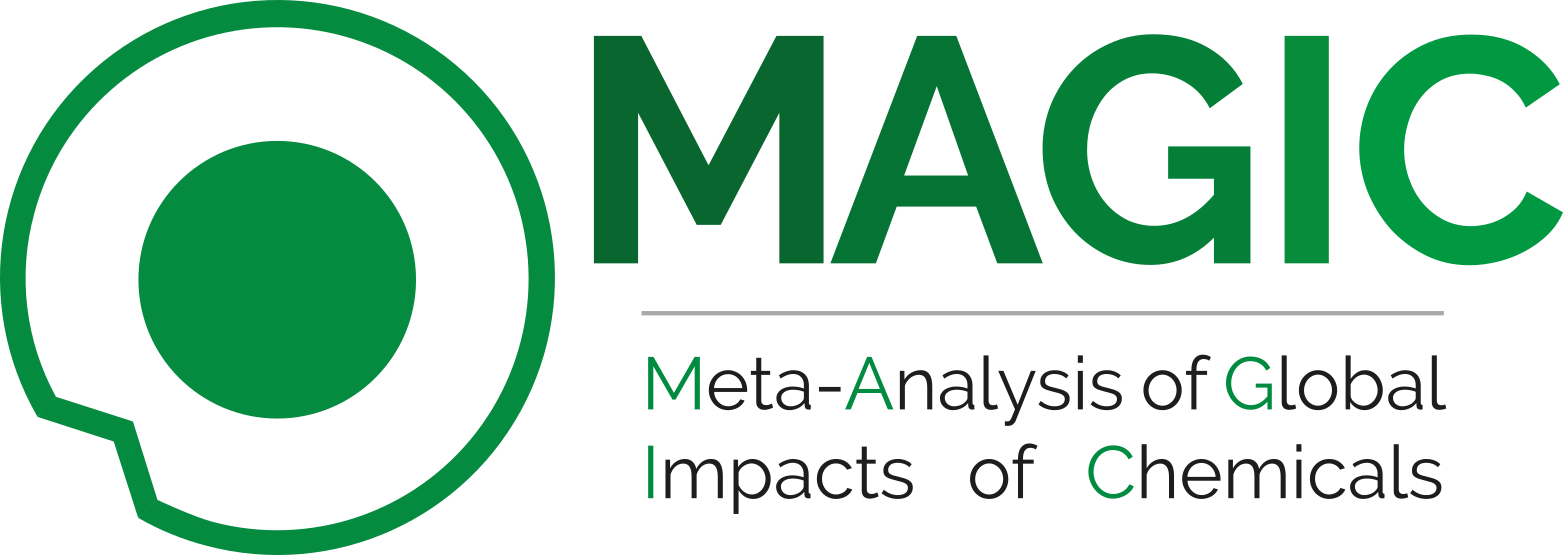
Featured publications and MAGIC research items
Featured Research

Applied pesticide toxicity shifts toward plants and invertebrates, even in GM crops
Ralf Schulz, Sascha Bub, Lara L. Petschick, Sebastian Stehle, Jakob Wolfram
Science 2021
Pesticide impacts are usually discussed in the context of applied amounts while disregarding the large but environmentally relevant variations in substance-specific toxicity. Here, we systemically interpret changes in the use of 381 pesticides over 25 years by considering 1591 substance-specific acute toxicity threshold values for eight nontarget species groups. We find that the toxicity of applied insecticides to aquatic invertebrates and pollinators has increased considerably—in sharp contrast to the applied amount—and that this increase has been driven by highly toxic pyrethroids and neonicotinoids, respectively. We also report increasing applied toxicity to aquatic invertebrates and pollinators in genetically modified (GM) corn and to terrestrial plants in herbicide-tolerant soybeans since approximately 2010. Our results challenge the claims of a decrease in the environmental impacts of pesticide use.

Water quality and ecological risks in European surface waters – Monitoring improves while water quality decreases
Jakob Wolfram, Sebastian Stehle, Sascha Bub, Lara L. Petschick, Ralf Schulz
Environment International 2021
Aquatic ecosystems are at risk of being impaired by various organic chemicals, however comprehensive largescale evaluations of waterbodies’ status and trends are rare. Here, surface water monitoring data, gathered as part of the EU Water Framework Directive and comprising the occurrence of 352 organic contaminants (>8.3 mil. measurements; 2001–2015; 8213 sites) in 31 European countries, was used to evaluate past and current environmental risks for three aquatic species groups: fish, invertebrates, plants. Monitoring quality indices were defined per country and found to improve over time. Relationships became apparent between countries’ monitoring quality index and their success in detecting contaminants. Across the EU, contaminants were more frequently found in recent years. Overall, 35.7% (n = 17,484) of sites exceeded at least one acute regulatory threshold level (RTL) each year, and average risks significantly increased over time for fish (τ = 0.498, p = 0.01) and aquatic invertebrates (τ = 0.429, p = 0.03). This indicates an increased chemical pressure to Europe’s waterbodies and overall large-scale threshold exceedances. Pesticides were identified as the main risk drivers (>85% of RTL exceedances) with aquatic invertebrates being most acutely at risk in Europe. Agricultural landuse was clearly identified as the primary spatial driver of the observed aquatic risks throughout European surface waters. Issues in monitoring data heterogeneity were highlighted and also followed by subsequent improvement recommendations, strengthening future environmental quality assessments. Overall, aquatic ecosystem integrity remains acutely at risk across Europe, signaling the demand for continued improvements.

Aquatic pesticide exposure in the U.S. as a result of non-agricultural uses
Sebastian Stehle, Abigail Bline, Sascha Bub, Lara Luisa Petschick, Jakob Wolfram, Ralf Schulz
Environment International 2019
Non-agricultural uses of pesticides are common in the U.S. and may thus lead to exposure of non-target ecosystems such as urban waterways. However, surface water exposure resulting from agricultural pesticide uses has received substantially more attention during the last decades. Here we conducted a literature review and meta-analysis of peer-reviewed studies to identify measured environmental concentrations (MEC) of pesticides in perennial surface water bodies due to non-agricultural uses in the U.S. Acute and chronic Aquatic Life Benchmarks (ALBacute, ALBchronic) for water-phase concentrations and regulatory threshold levels (RTLSED) for sediment concentrations were used for risk evaluations. Based on 10,755 MECs retrieved from 70 scientific studies, results show that a multitude of pesticide compounds (approx. 150) have been detected at 609 urban surface water sites. Particularly herbicides and insecticides were among the most frequently detected compounds in the water phase, whereas insecticides dominated detections in sediments. While overall acute (5.64% ALBacute exceedances; n=9034 MEC) and chronic (9.31% ALBchronic exceedances; n=9036 MEC) risks were comparably low in the water phase, 35% of sediment concentrations (n=1621 MEC) exceeded RTLSED. Insecticides and particularly pyrethroids were identified as the main drivers of benchmark exceedances in both the water phase and sediments. In addition to pesticide type, a linear model analysis identified further drivers important for risks such as sampling methods. Overall insecticide risks in non-agricultural surface waters were significantly (by a factor of 1.9) lower than those already known from agricultural surface waters in the U.S. However, substantially higher risks in sediments were identified for urban compared with agricultural waterbodies. The present study provides the first comprehensive assessment of pesticides in urban surface waters in the U.S. with overall results indicating common occurrence and non-negligible risks particularly due to urban insecticide uses.
Recent Publications
You can find a full list of our publications here!

